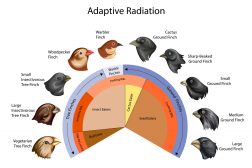Definition
noun, plural: myeloblasts
A precursor cell that gives rise to a promyelocyte during granulopoiesis
Supplement
Hematopoiesis is the process of forming new blood cellular elements in vertebrates. It begins with a multipotent stem cell, a hemocytoblast, which gives rise to a common myeloid progenitor cell (CMP). The CMP, in turn, gives rise to granulocyte-monocyte colony forming units (CFU-GM), also called granulocyte-macrophage progenitor. The CFU-GM may partially differentiate into CFU-G (precursor in myelocyte-granulocyte series) or CFU-M (precursor in monocyte-macrophage series). The CFU-GM serves as the precursor for monoblasts and myeloblasts.
The myeloblast is a committed progenitor cell that gives rise to a promyelocyte. Its size ranges from 14 to 18 µm in diameter. It typically resides in the bone marrow. It usually has three or more nucleoli. The cytoplasm is basophilic and agranular.
The myoblasts are the first developmental stage of the myelocytic series. In this series, the developmental stages are as follows: hemocytoblast → common myeloid progenitor (or CFU-GEMM) → CFU-GM → CFU-G → myeloblast → promyelocyte → myelocyte → metamyelocyte → band cell → granulocyte.
Word origin: Greek muelós (“marrow”) + Greek blastós (“germ”, “sprout”)
See also:
- common myeloid progenitor cell
- promyelocyte
- hematopoiesis
Related form(s):







